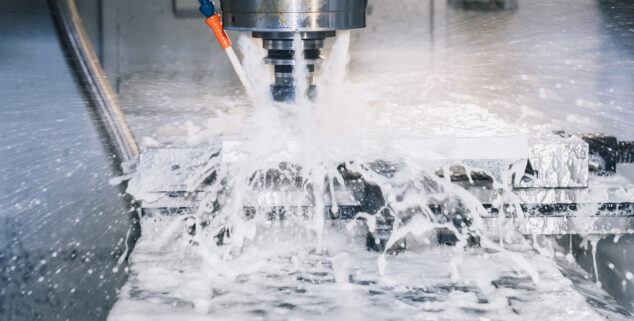Opinion
Statewide water supply target supports California’s manufacturers
 Metalworking CNC milling machine. Cutting fibreglass parts in modern processing technology. Image by valdisskudre
Metalworking CNC milling machine. Cutting fibreglass parts in modern processing technology. Image by valdisskudreOPINION – Water use in California is typically thought of in three parts: water for the environment (50%), water for agriculture (40%), and water for communities (10%) per the Public Policy Institute of California (PPIC). As a result, “ag” is the sector of the economy that comes to mind first when we talk about the state’s water supply. But the rest of California’s economy also requires water.
California’s manufacturers – one of the state’s largest industry sectors, accounting for 11.8% of state GDP – need water. Manufacturers use water for many processes, including fabrication, processing, washing, diluting, cooling, and transporting goods. Water is also a key component of products themselves, such as in the production of food, paper, and chemicals, and in petroleum refinement. “On an elementary level,” explains the company Jenco, a manufacturer of water quality meters, “the process of refining and producing raw materials… demands water.”
Manufacturers prioritize conserving water, and many facilities use “smart” meters and monitoring systems to find and plug leaks, and to make their systems more efficient overall. Technologies to reuse and recycle water are advancing and expanding. Since 2005, most factories have reduced water use by 12% or, since 1970, by 33%.
That trend mirrors the conservation efforts of Californians, too, who altogether use “roughly the same amount of water” today as we did in the late 1980s, “despite growing by more than 10 million residents,” per PPIC.
However, conservation is California’s only recent progress toward sustaining its water supply. Since the 70s and 80s, which saw the last major improvements to the state’s water infrastructure, policymakers’ approach to water management has been based increasingly on conservation, rather than expanding storage to meet the demands of the future.
As a statewide matter, “it is not enough to rely solely on conservation to meet demand,” the PPIC says. As California’s climate grows more unpredictable and volatile, “communities that have already attained low levels of per-capita water use… have less flexibility to further reduce water use,” leaving them more vulnerable to periods of drought.
The same logic applies to the state’s manufacturers. Having already reduced water use, a supply strategy predicated on conservation alone will prove increasingly untenable. A person or a facility can only conserve so much water; each requires a minimum amount to function.
During drought conditions, that minimum amount is often unavailable. For communities, that means trucking in water and other emergency measures. For manufacturers, it means “reduc[ing] manufacturing productivity” or even temporarily closing key facilities, according to Drought.gov—consequences which carry significant, negative economic impacts.
Manufacturing is considered the “gold standard” for jobs – says the state assembly’s Committee on Jobs, Economic Development, and the Economy – “because of the higher wages paid to workers, the inclusion of small businesses within its extended supply chains, and the high multiplier effect on their local communities and across the state.” The Milken Institute estimates that for every job created in manufacturing, 2.5 jobs are created in other sectors. Therefore, for every manufacturing job lost, many others are threatened, too.
For this and many other “downstream” reasons, California’s water supply itself – not just efforts to conserve that supply – must improve.
SB 366 (Caballero) offers a transformative starting point: a statewide water supply target that ensures sustainability for cities and towns, agriculture, other industries, and the environment. The bill would establish long-term water supply targets for the state to achieve by specific deadlines, and require that state agencies develop plans and milestones to achieve those targets. This work would be done in cooperation with water agencies, wastewater service providers, and other stakeholders.
Statewide target-setting has been done in other sectors. In transportation, all new cars sold in California should be zero-emission vehicles by 2035. In energy, the state is scheduled to use 100% clean electricity by 2045. And in housing, the state shall build 2.5 million new housing units by 2030. Why not an overall target for water?
Without a necessary target, our water supply – for the environment, communities, manufacturers, and others – will be increasingly in peril.
Lance Hastings is the President and CEO of the California Manufacturers & Technology Association.
Want to see more stories like this? Sign up for The Roundup, the free daily newsletter about California politics from the editors of Capitol Weekly. Stay up to date on the news you need to know.
Sign up below, then look for a confirmation email in your inbox.

Leave a Reply